In this Gypsy jazz guitar lesson, you will be looking at a couple of ways to end a jazz ballad. There is a special chord that throws the listener into limbo at the end of a II-V progression. This chord can lead you in different directions to create a free improvisation at the end of a jazz standard.
The chord I’m talking about is the half-diminished chord that starts on the flat five (aka sharp four or tritone) of the tonic chord.
For example: Bm7b5 in the key of F major.
Video
Nuages (starts at 0:50 in the video)
Take Nuages (Django Reinhardt), for example.
This jazz standard is in the key of F and, like many songs, ends with a II-V-I progression (Gm- C7- F).
A way to end this standard is by replacing the F at the end of the II-V-I with a Bm7b5 chord.
This is called a deceptive resolution, a chord you play instead of going to the I. After playing Gm7-C7 (II-V), you expect to hear Fmaj7 (I), but instead, you hear a Bm7b5 (bV).
An ending that starts on the bV is called a flat-five ending.
This chord is not what the audience expects to hear, and it focuses their concentration, making them wonder what comes next.
This is the door to starting a new solo improvisation, using any chord progression that you want.
There are many ways to start your solo improvisation from that Bm7b5 chord.
You can build a chord progression with a descending or ascending chromatic bass.
Try out different chords and progressions for yourself, explore the tensions you can add to each chord, and play around with it.
You can also improvise with single notes over the chord progressions you create.
Descending Bassline Ending (starts at 3:53)
The first three examples all feature a descending bassline starting on the Bm7b5.
Descending Bassline – Example 1 (starts at 6:54)
This first example has a descending chromatic bassline going from Bm7b5 all the way to the tonic chord, F6/9.
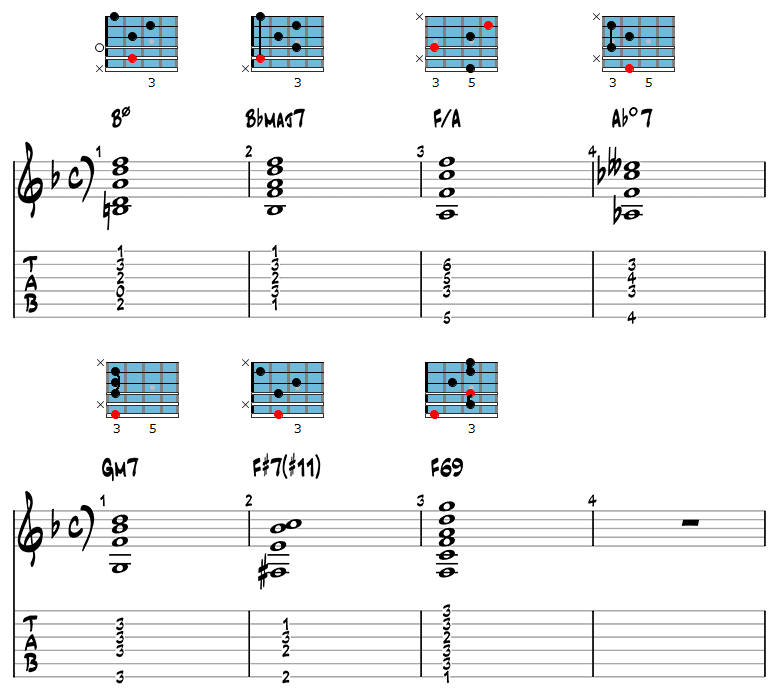
Descending Bassline – Example 2
Example 2 is similar to the previous example, but this time, we keep an f as the top note of each chord.
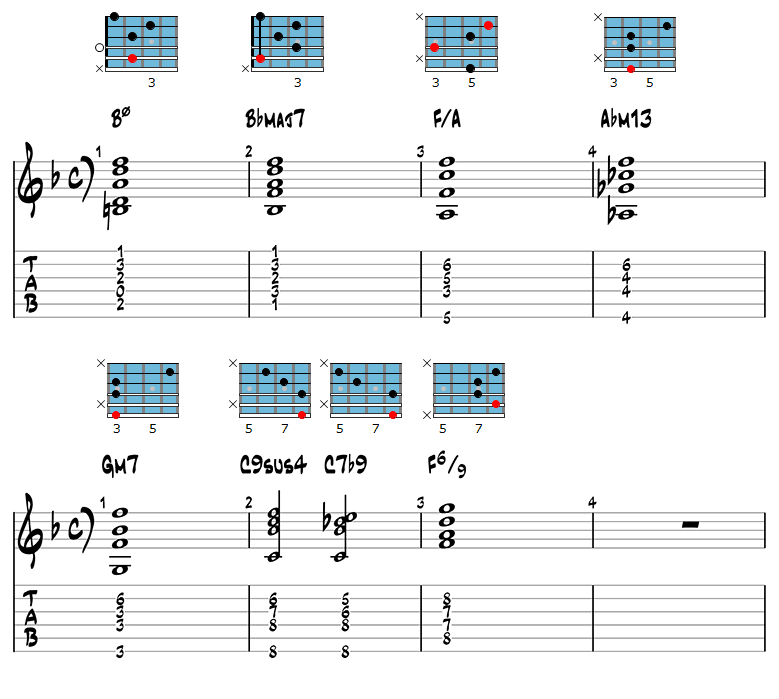
Descending Bassline – Example 3
The following example uses the same descending bassline as the previous examples but this time with minor chords mostly.
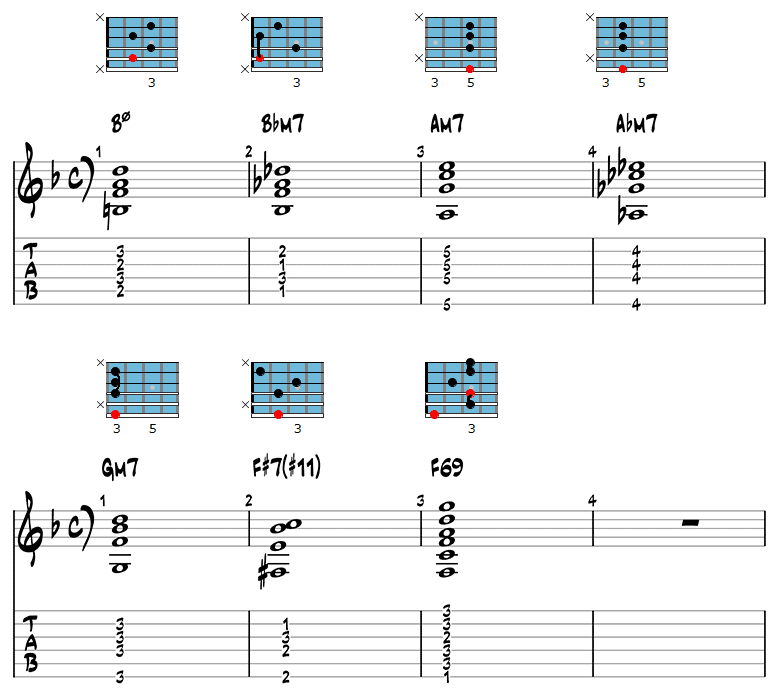
ii V Ending (starts at 9:52)
You can also look at Bm7b5 as the II chord in a II-V-I progression that leads to A minor (Bm7b5- E7- Am).
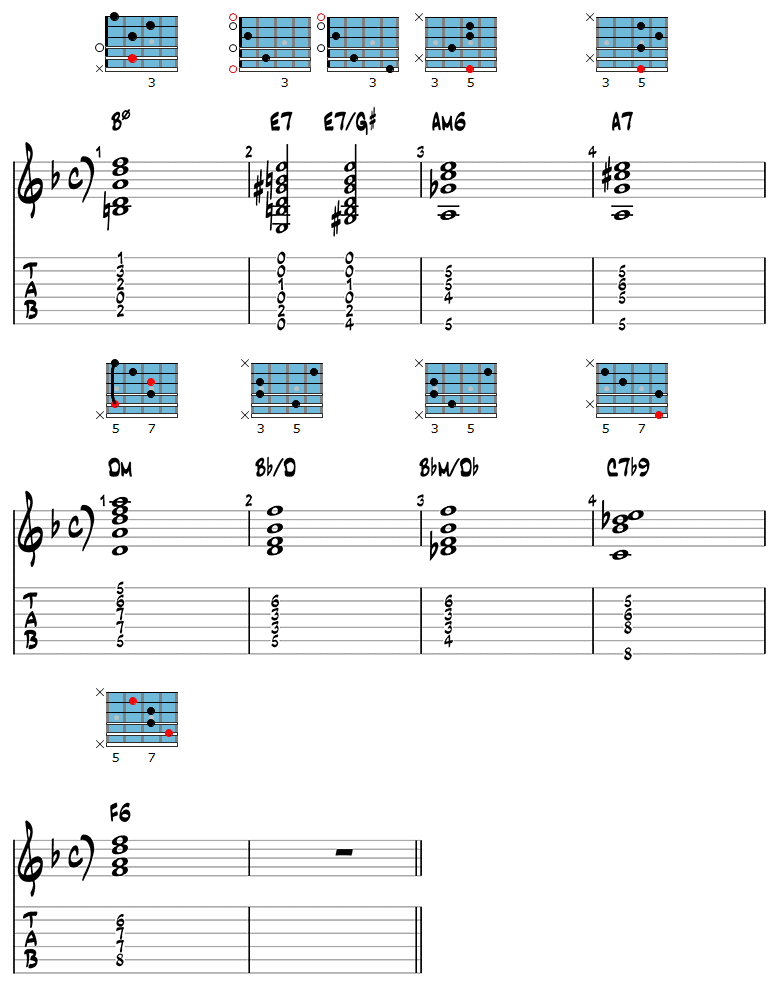
Ascending Bassline Ending (starts at 12:07)
This final example has an ascending chromatic bassline going from Bm7b5 to Gm7.
If you don’t know where to go in a chord progression, a diminished chord is often worth a try.
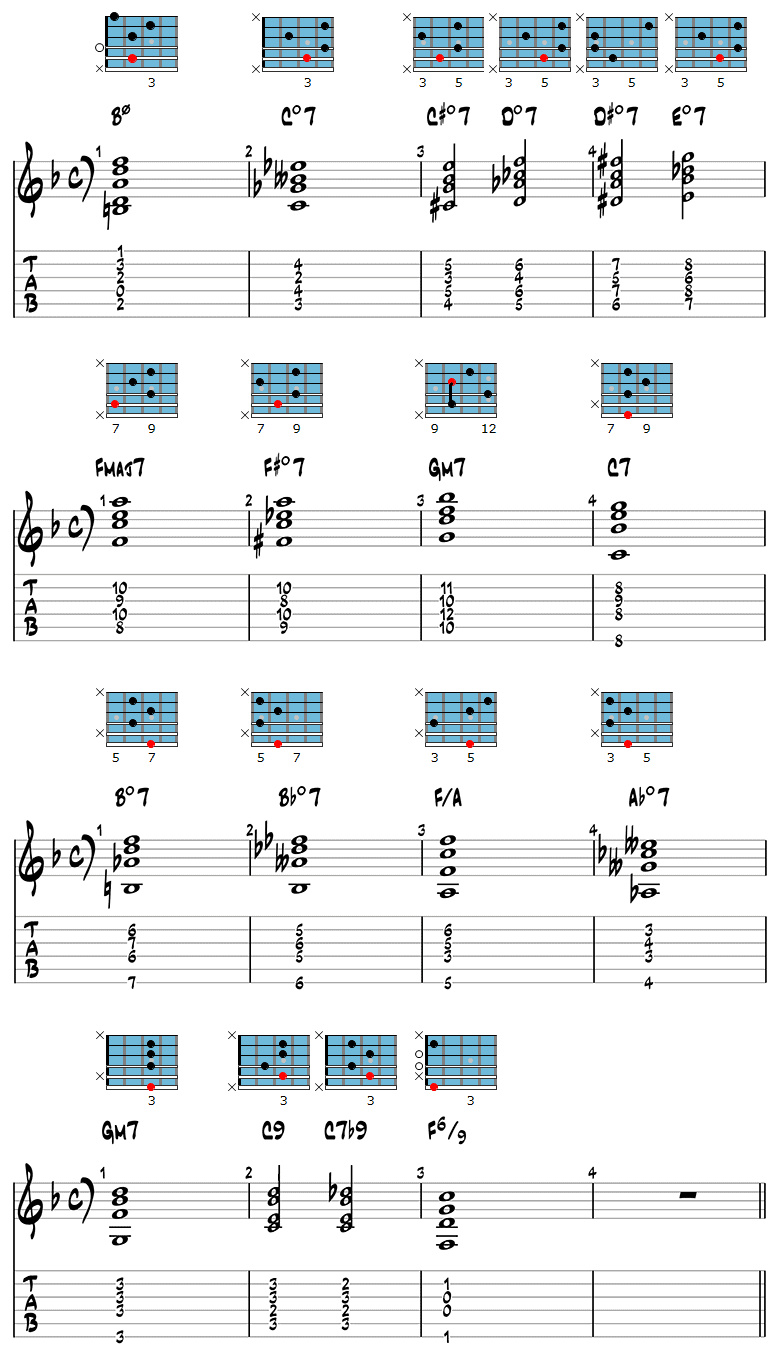

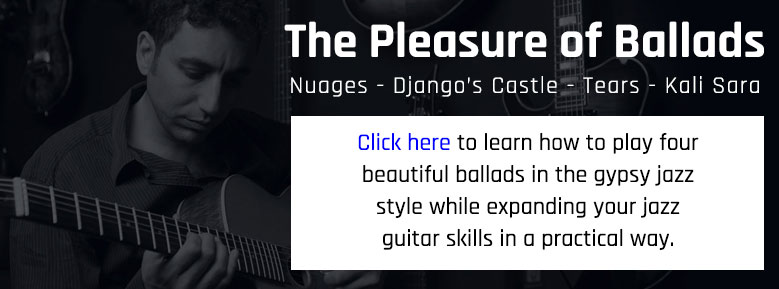

Excellent! Simply excellent. Descending Bassline Ex. 3 just jumped out at me. For quite some time I have been listening to and trying to figure out the coda (ending) to the Irving Berlin tune “Cheek To Cheek” as recorded by Sara Lazarus on her album “It’s All Right With Me” with the great Bireli Lagrene. Bireli ends the tune with a lighting fast descending run that I couldn’t quite figure out. (BTW the recording is in the key of G, so raise Ex. 3 up two frets to play along). I managed to figure out the first chord – C#m7b5 (in G) X4545X – and just moved that shape down (C#, C, B, Bb [all m7b5 chords of course] and ending on Am7 5X55XX, D7 5X45XX and G6/9 XX2233 (or whatever G6/9 shape a person chooses). My ear said I was very close but not quite correct. I just tried your example and believe your example is what Bireli is playing. Thank You.
I thought Nuages was in G
Hi Jay, Django’s first 1940 recordings of Nuages were in F. In 1946 he recorded a version in G.
Thanks Dirk, thought I’d been in the wrong key for thirty years, I’ll have to give F a try thanks for all your cool ideas and tips
Bm7b5 = Dm7/B. In the tune F that means a resolution over the VI degree of that tune : II – V – VI. Classical harmony called that ” broken cadence”.
I had almost no idea what you were talking about but I still really enjoyed the lesson.
I dig this. Sweet changes. Very cool.